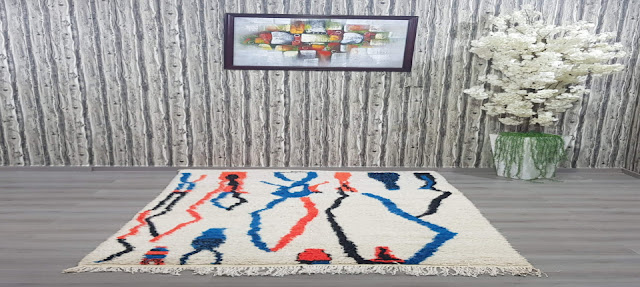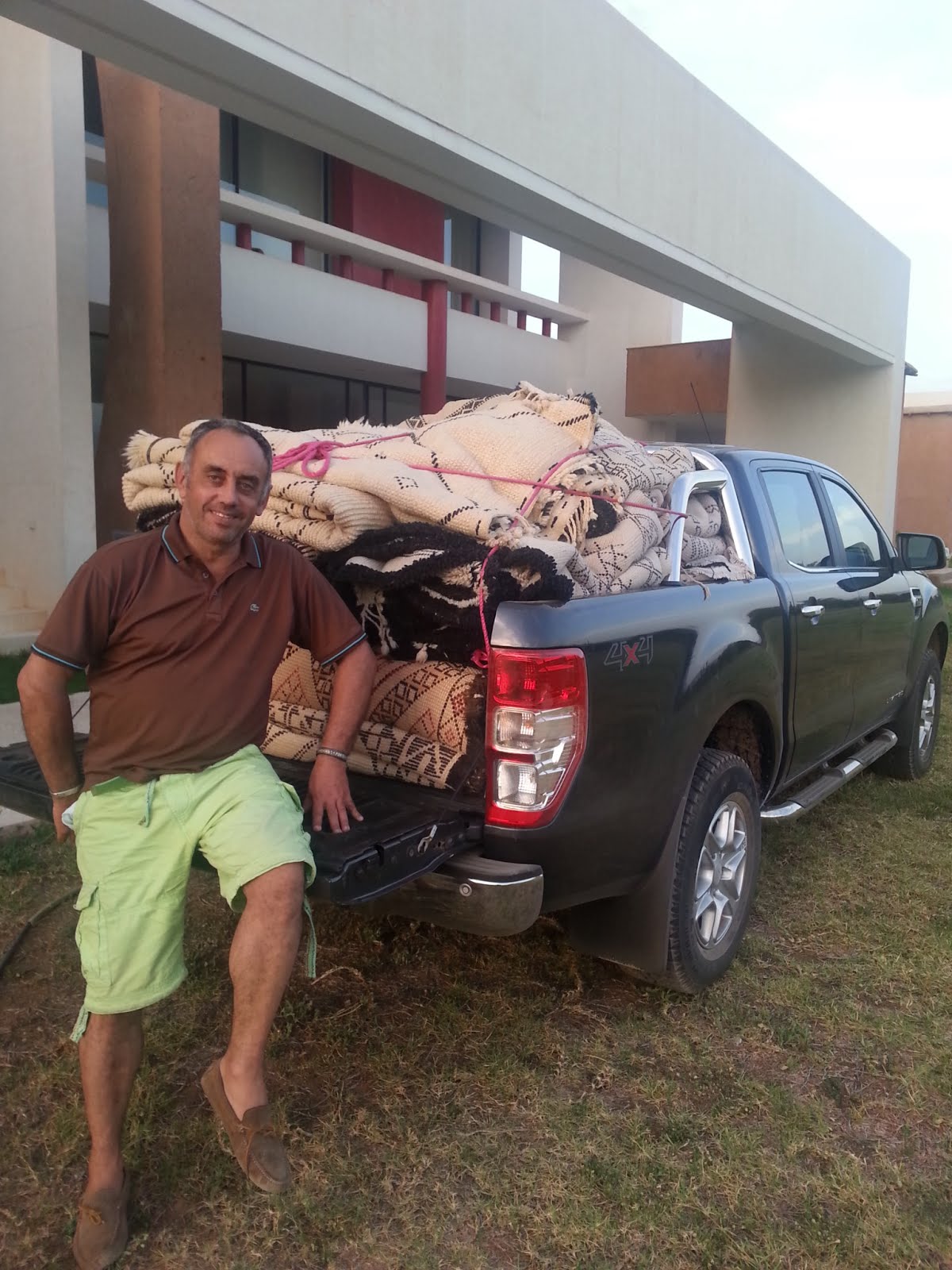Since time immemorial, the rural Amazigh people and shepherds of Morocco have based their economy on sheep and the wool used by women to weave carpets, which fully reflects the importance of wool in all aspects of Amazigh life. The carpets are hand-made from sheep's wool using simple wooden looms, either vertical or horizontal, placed on the ground. The size of the loom limits the width of the carpet to about 2 meters, which is the size a family needs to sleep, and it is very rare to find an old carpet that is not long and narrow enough.
Traditionally, Moroccan carpets were made only by women to be used in their own homes, to decorate floors and to serve as seat covers, bedspreads or blankets during the coldest months. Rugs are full of symbolism and often tell the story of the woman who created each piece. Each rug takes about 20-30 days to weave by hand and the design is always completely original - no two rugs are ever the same.
During a visit to the Atlas Mountains, journalist Brooke Bobb from Vogue met Amazigh women weavers and discovered their age-old art and knowledge inherited from grandmothers :
"The woman and her fellow weavers use only a small picture of the design as a reference when making the carpet. Their understanding of where lines and shapes begin and end is based solely on instinct, a knowledge passed down to them by their Berber mothers and grandmothers. One of the carpets was bright pink and purple, decorated with traditional diamond patterns. Another was deep blue and grey, in the style of a Rothko painting. All the threads were hand-dyed and spun by hand with raw wool. Wright and Lobo-Navia studied the piles of fluffy yarns stacked on the floor of a room. They assessed how weak they were for some colours and how much they had too much for others. After examining the yarn, they began measuring the carpets halfway up the looms. Most of them were accurate; one was off by one or two centimetres".
Craftsmanship is still very important for Amazigh communities. Usually, while the men work in the mountains or on the farms, the women work in their huts, creating beautiful handmade ceramics or weaving carpets. All the finished products are then taken down to the big cities like Marrakech, where people auction their products to the owners of the souks. The buyers then sell the carpets, ceramics and other pieces in their shops to other locals and tourists. This process provides income for Amazigh villages, often their main source of livelihood.
Moroccan carpets represent the most characteristic aspect of the country's cultural heritage. The soul of the carpet seems to reflect the landscape of the Atlas Mountains. These carpets are like books filled with signs and symbols. One discovers a world of thought based on a palette of exuberant colours. These women living in rural villages have appropriated their textile creations as a space of freedom where they have developed personal creativity and surprising artistic expression. The carpet becomes essential, it is a link between past and present, between earth and sky. These magnificent carpets could be presented in different art museums.
The culture and traditions of each Amazigh community can be very different from one region to another. Thus, depending on the tribe, carpets may have different styles, colours and weaving techniques, or even belong to the same generic type. The origin of the Amazigh carpet can be found in the Atlas Mountains of Morocco, where people used different techniques from those used for oriental or Persian carpets.
If you compare the patterns of the Amazigh carpet with the signs of the rock arts and the artefacts of the primitive cultures of mankind, you will find the same signs and forms used and you will discover surprising similarities and links that you can also trace back to the Upper Paleolithic period in Europe and the Neolithic period in the East and the Mediterranean basin, which explains why the Amazigh carpet can be considered as the last testimony of the archaic world.
The abstract and geometrical language of the Amazigh carpet comes from the origins of the body and the form and functions of the human sexual organs. Based on the duality and relationship of man and woman, it became the expression of universal fertility including all of nature. The carpet is an artistic creation of the woman and reflects above all the phases of her life, her timeline and her sexual experience: as a virgin, a new bride, through marriage, pregnancy and childbirth. During the 12th and 13th centuries, Morocco was already known for the beauty of its Amazigh carpets, rugs and wall hangings ( Hanbel ).
In the Middle Ages, the carpet was one of the gifts of foreign embassies or was used in the princely caravan where beautiful silk fabrics with gold thread and "zarabi" carpets were mounted on camels. Among the different meanings of "zarabi" (carpet) that come from Arabic are "flowerbed" and "that which is laid on the ground and on which one leans". The Berber word for this is "tazerbit". In Morocco, one can also use the word "gtifa" which comes from the same origin, which is the name of the woollen carpets often knitted in the high altitude region, Marmoucha or Ait Ouaouzguite for example.
In the 16th century, Jean Léon L'Africain (Hassan al-Wazzan) explained that the carpet was one of the gifts of the brides of Fez: "We always give a woollen carpet of about twenty cubits and three blankets of which one side is a sheet" . The carpets were also sold at auction in Fez and exported, in particular to black Africa.
The oldest carpet preserved in Morocco dates from the 18th century.
Moroccan Berber Rugs
Read More























